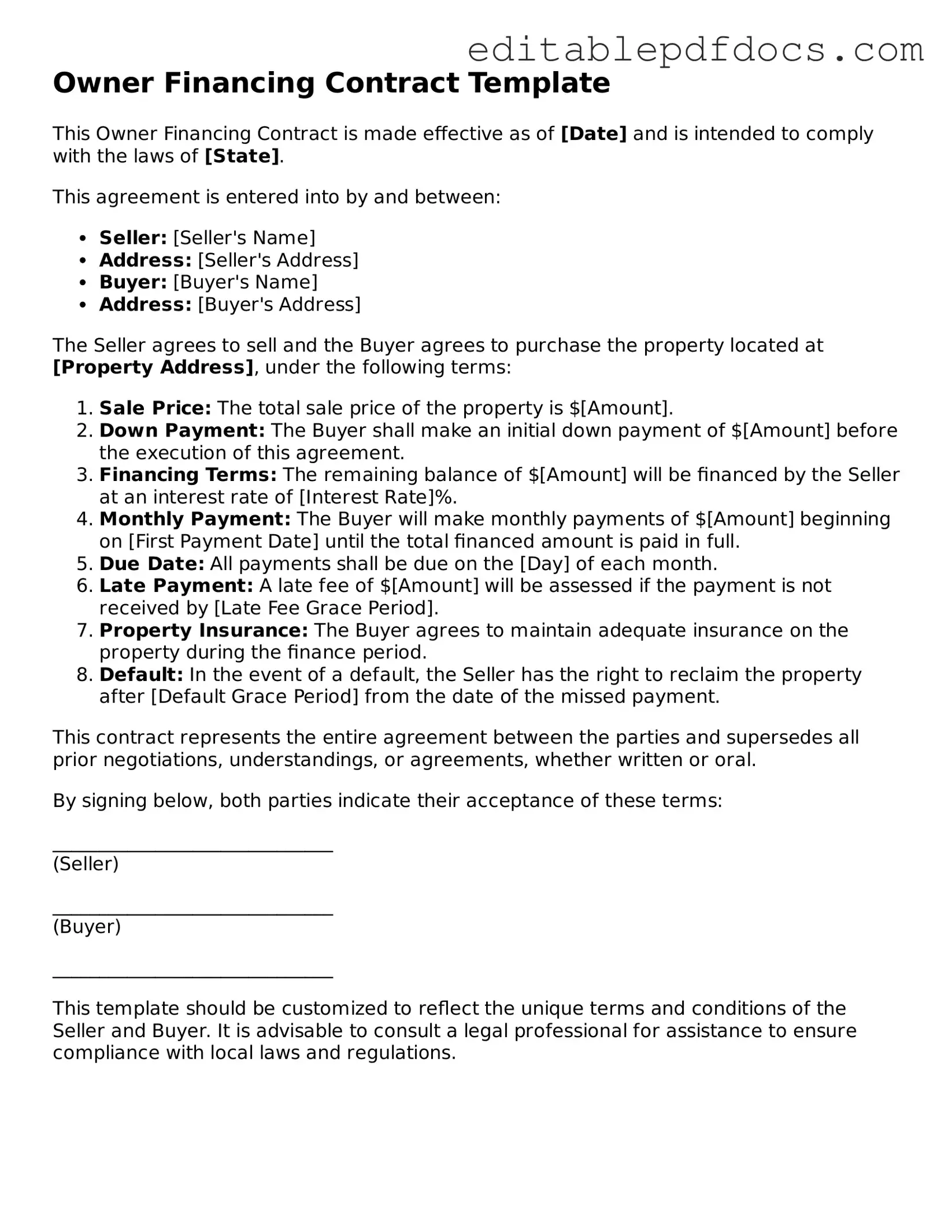Filling out an Owner Financing Contract form can be a straightforward process, but many individuals make common mistakes that can lead to complications down the line. One frequent error is failing to clearly identify all parties involved. It’s essential to include the full names and addresses of both the buyer and seller to avoid any confusion later.
Another common mistake is neglecting to specify the purchase price. Without this critical detail, the contract lacks clarity, which can lead to disputes. Buyers and sellers must agree on a price before moving forward.
Many people also overlook the importance of detailing the financing terms. This includes the interest rate, payment schedule, and duration of the loan. Vague terms can create misunderstandings, so it’s vital to be as specific as possible.
Additionally, some individuals forget to include a description of the property being financed. This description should be clear and precise, including the address and any pertinent details. Failing to do so can complicate the transaction.
Another mistake is not addressing contingencies. Buyers and sellers should outline any conditions that must be met for the contract to be valid. This could include inspections, financing approvals, or other necessary steps.
Some people neglect to include a clause for default. It’s important to specify what happens if either party fails to uphold their end of the agreement. This can protect both parties in the event of a breach.
Inadequate signatures can also be an issue. All parties must sign the contract for it to be legally binding. Not obtaining the necessary signatures can render the contract void.
Many individuals fail to keep a copy of the completed contract. It’s crucial to have documentation for future reference. Without a copy, parties may struggle to recall the agreed-upon terms.
Another oversight involves not consulting a legal professional. While it may seem straightforward, having an attorney review the contract can help identify potential issues and ensure compliance with local laws.
Lastly, some people rush through the process. Taking the time to carefully review each section of the contract can prevent errors and misunderstandings. A thorough review is essential for a successful transaction.
